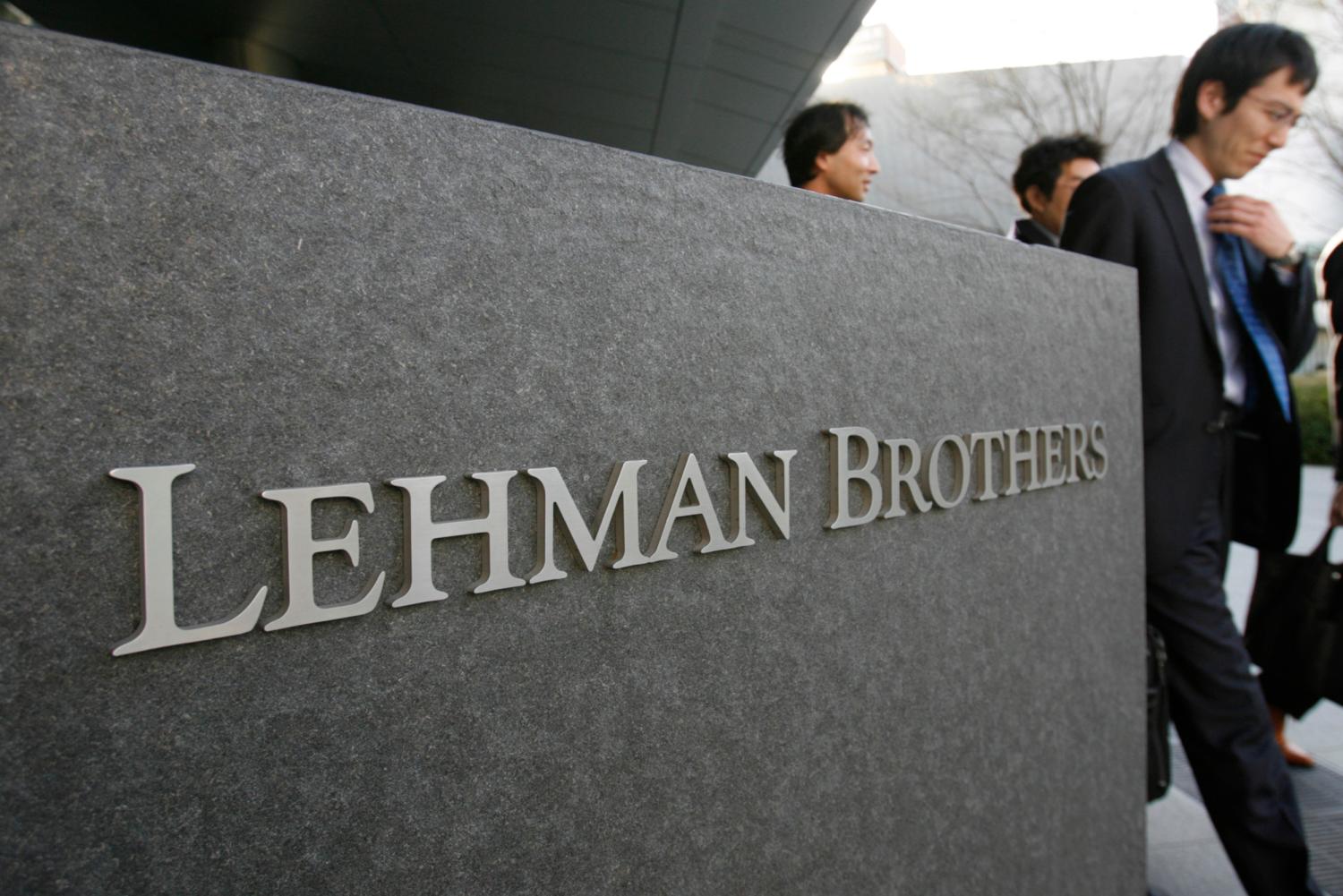This report is part of the Series on Financial Markets and Regulations and was produced by the Brookings Center on Regulation and Markets.
In the 10 years since Lehman Brothers filed for bankruptcy, debate continues to rage over many aspects of the crisis, such as the question of whether regulators could have bailed out Lehman if they wished to. But a standard narrative about the implications of not bailing Lehman out quickly took hold. According to this narrative, the failure to rescue Lehman was the defining event of the 2008 crisis, the match that started the conflagration. And its consequences show that, under the financial architecture in place at the time, bailouts were the only effective response to the financial distress of a systemically important financial institution.
In my view, this settled wisdom, which I have elsewhere called the “Lehman Myth,”1 is largely mistaken. After first describing the conventional perspective in slightly more detail, I will use four questions as the framework for my analysis: 1) Was the Lehman bankruptcy the key moment in the crisis?; 2) Did Lehman trigger the broader crisis?; 3) Would bankruptcy have worked for Lehman and other large financial institutions?; and 4) Does the inaccuracy of the conventional wisdom matter, or is it harmless given, among other things, subsequent regulatory reforms?
The Conventional Wisdom
The days before Lehman’s bankruptcy filing on September 15, 2008, saw frantic efforts by Treasury Secretary Hank Paulson and other regulators to arrange a sale or rescue for Lehman.2 The regulators refused to provide a federal guarantee or other bailout. After Bank of America decided not to pursue an acquisition, the parties negotiated a potential sale of Lehman’s brokerage operations and other “good” assets to Barclays, and proposed leaving its troubled real estate assets—the “bad” assets—behind. The real estate assets would be funded by contributions of at least $1 billion each by the other systemically important banks.3 The transaction collapsed, however, when the Financial Services Administration—the U.K. securities regulator—refused to waive the shareholder vote required before Barclays would be permitted to guarantee Lehman’s operations during the period of the sale.
With the Barclays transaction in shambles, regulators pressured Lehman to file for bankruptcy, much to the consternation of Lehman’s bankruptcy lawyers. “Yesterday, no one from the Fed was telling us to file,” the lead bankruptcy lawyer complained, according to a popular account of Lehman’s fall.4 Shortly after Lehman filed for Chapter 11, Reserve Primary Fund, a major money market fund that held a large amount of Lehman’s commercial paper, announced that it would be forced to “break the buck”—that is, it could not pay its investors a full dollar for each dollar they had invested. This triggered a run on money market funds that the Fed countered by promising to guarantee money market fund assets. The day after Lehman’s bankruptcy filing, the Fed bailed out AIG, and a few weeks later, Congress passed the Troubled Asset Relief Program (“TARP”), which allocated $700 billion to stabilizing the financial system.
One significant question continues to be debated, even 10 years on: could regulators have bailed out Lehman if they wished to? In the years since the collapse, the key regulators have claimed they could not have rescued Lehman because Lehman did not have adequate collateral to support a loan under the Fed’s emergency lending power.5 Skeptics point out that the regulators initially explained the decision on other grounds, that the emerging lending authority was quite broad, and that the Fed and other regulators were quite creative in using this authority to bail out Bear Stearns and AIG.6
Although the “could they” or “couldn’t they” debate may never be resolved, there is widespread agreement about the larger meaning of Lehman’s default. The conventional wisdom about Lehman has three parts. First, although regulators initially were praised by some for not rescuing Lehman,7 the narrative later shifted. According to the story that soon took hold, Lehman’s default was the key moment in the 2008 crisis, the only major misstep the regulators made. Second, Lehman’s collapse triggered all of the financial carnage that followed, both in the U.S. and around the world. Third, bankruptcy was not an adequate mechanism for resolving a systemically important financial institution’s (SIFI’s) financial distress. Each of the assumptions is problematic.
Was Lehman Day the Key Moment?
The assumption Lehman Day was the key moment in the crisis would perhaps be accurate if nothing significant had occurred prior to the failure of Lehman. But this is not the case. Almost exactly six months before Lehman, another major investment bank, Bear Stearns, collapsed in similar fashion. Regulators’ handling of Bear Stearns’ distress set the stage for everything that followed.
After regulators were alerted to Bear Stearns’ impending collapse in March 2008, they dismissed the possibility of a bankruptcy filing.8 Instead, they arranged for a distressed sale of Bear Stearns to J.P. Morgan Chase. To facilitate the sale, the New York Fed provided $29 billion of assistance. Although the sale price was later renegotiated, the bailout enabled Bear Stearns to avoid default.
By bailing out Bear Stearns, regulators sent a very different signal—that they would rescue a major financial institution that threatened to default on its obligations.
If regulators had not bailed out Bear Stearns, the consequences for Bear would have been unpleasant, but the markets and managers of troubled, systemically important financial institutions (“SIFIs”) would have known they needed to prepare for bankruptcy if they fell into financial distress. By bailing out Bear Stearns, regulators sent a very different signal—that they would rescue a major financial institution that threatened to default on its obligations. During the summer of 2008, Treasury Secretary Paulson insisted troubled SIFI’s could not count on a bailout, but neither the market nor Richard Fuld, the CEO of Lehman, treated these claims as credible. It was widely assumed that regulators would step in with other systemically important financial institutions, as they did with Bear Stearns.
A good measure of this perception is the credit default swap (“CDS”) spreads on Lehman’s debt. Although Lehman’s precarious financial condition was well known, the CDS spreads remained quite stable throughout the summer of 2008, and did not spike upward until the week before Lehman’s bankruptcy filing.9 The market clearly thought Lehman would be rescued. Nor was this an unreasonable assumption. Lehman was a much larger bank than Bear Stearns. If regulators concluded that a smaller investment bank needed to be bailed out, surely they would reach the same conclusion about a very large one.
The decision to bail out Bear Stearns set expectations for everything that followed. This, in my view, was the key moment in 2008. Because Lehman was unprepared for a bankruptcy filing, its bankruptcy was much more disorderly than it otherwise would have been.
Did Lehman Cause the Crisis that Followed?
In the public imagination, Lehman’s collapse triggered all of the distress that followed. Lehman did have a significant effect on the market. The S&P 500 had dropped nearly 5% by the end of the day on September 15, 2008, and Lehman’s effect on money market funds and the commercial paper market were serious problems. Yet there is strong evidence that Lehman alone was not the primary trigger of the crisis that followed.
One piece of evidence that Lehman’s role has been overstated comes from the very week of the Lehman collapse. Regulators intervened to bail out AIG less than two full days after Lehman filed for bankruptcy. If Lehman were the sole cause of the crisis, its bankruptcy would have had a much more dramatic impact on the stock market than the AIG bailout. But it didn’t. The stock market fell almost exactly as much in response to the AIG bailout as the Lehman bankruptcy, suggesting that Lehman’s role has been exaggerated.10
Economist John Taylor has provided further evidence that the conventional wisdom vastly overstates the impact of the Lehman bankruptcy. Looking at the spread between the interest rates for long-term bank loans and for overnight loans, a measure of stress in the market, Taylor found that the real ratcheting up of the crisis started on September 19, when the Fed and Treasury announced that they would ask Congress for $700 billion to defuse the crisis.11
But it is clear that Lehman’s bankruptcy was not the sole, and arguably not even the largest, trigger of the crisis.
The impact of these and other events during this period was quite interconnected, which makes it difficult to draw firm causal conclusions about the trajectory of the crisis. But it is clear that Lehman’s bankruptcy was not the sole, and arguably not even the largest, trigger of the crisis.
Would Bankruptcy Have Worked?
Many commentators have pointed to Lehman’s bankruptcy as evidence that bankruptcy was not adequate to the task of resolving the financial distress of a systemically important financial institution. Thousands of derivatives were almost immediately closed out, and as much as $75 billion in value disappeared at the outset of the case as a result. Moreover, the case still is not finished, 10 years after it was first filed.
The obvious problem with this reasoning is that the Lehman bankruptcy came without advance planning. Because they expected to be rescued if necessary, Dick Fuld and Lehman made no effort to prepare. If they had, they could have arranged Lehman’s affairs to reduce the loss of value. It is possible Lehman would have found a buyer for some or all of its assets if it were contemplating a bankruptcy.12 Even if these efforts fell through, it could have reduced its potential losses by, among other things, adjusting its derivatives portfolio. Because derivatives are excluded from bankruptcy’s automatic stay,13 Lehman could not have prevented derivatives counterparties from terminating their contracts. But the losses would have been considerably less if Lehman had planned for its bankruptcy, rather than filing in desperation at the last minute.
It is a mistake to call the Lehman bankruptcy proceedings a failure.
Given the utter lack for planning, the Lehman bankruptcy went surprisingly well. Lehman was able to sell its most important and time sensitive assets—its brokerage operations—less than five days after its bankruptcy filing. Since then, Lehman has gradually unwound its affairs, in many cases litigating against counterparties that sought to use favorable valuations in determining the parties’ obligations. The overall recoveries are likely to be far greater than was initially expected.14 It is a mistake to call the Lehman bankruptcy proceedings a failure.
Does the Misperception Matter?
If regulators were faced with another crisis today, their options would be quite different than they were in 2008. Title II—the Orderly Liquidation Authority—of the Dodd Frank Act of 2010 was designed to give regulators greater authority to intervene when a systemically important institution falls into financial distress. If the Treasury, Fed and FDIC agree that intervention is necessary (the “three keys turn”) and the financial institution is in danger of default, they can commence a receivership overseen by the FDIC. These powers extend to the holding company and most subsidiaries, not just to the commercial banking subsidiaries the FDIC already handled.15
As drafted, Title II requires the FDIC to liquidate the troubled financial institution. If the liquidation mandate were strictly applied, Title II would never be used. Given the potential severity of the consequences, regulators would be strongly tempted to bail the institution out instead. The FDIC has devised an alternative resolution strategy, however, that would recapitalize rather than shut down the troubled institution. Under Single Point of Entry (“SPOE”), as the approach is called, the assets, short-term debt, and secured debt of the holding company would be transferred to a new bridge institution, and its stock and long-term debt left behind.16 The bridge institution would be fully solvent. More recently, lawmakers have proposed legislation that would facilitate analogous transfers in bankruptcy by, among other things, authorizing transfers effected on short notice and imposing a temporary stay on derivatives.17
SPOE is quite elegant on paper—indeed, it converted me from a strong critic of Title II to a cautious supporter—but it is impossible to know whether it would in fact work in practice, either under Title II or in its bankruptcy incarnation. Skeptics worry, among other things, that creditors would run, despite the plan to quickly create a fully solvent bridge institution.18 I personally am somewhat more optimistic, particularly if Congress enacts the proposed bankruptcy-for-banks legislation. This would provide two lines of defense, bankruptcy as the first resort and Title II as the backup.
In addition to the legislative changes since 2008, the regulators themselves have adjusted to the post-crisis world. In 2008, the Fed and Treasury seem to have had very few bankruptcy experts in their midst. This may have been one reason bankruptcy was not more seriously considered with Bear Stearns. A decade later, there seems to be much more bankruptcy expertise within the ranks of the regulators.
Given all these changes, the misperception of Lehman may seem to be solely of historical interest, and of little relevance for current financial markets. In reality, however, the misperception still matters a great deal.
First, the conventional wisdom could chill enthusiasm for enacting the bankruptcy-for-banks legislation currently pending in Congress. Lawmakers and others who are skeptical about bankruptcy are likely to view bankruptcy amendments through the lens of that skepticism. This would be unfortunate. As I have argued on this site previously,19 the proposed legislation would significantly improve the effectiveness of bankruptcy by facilitating SPOE-style transactions.
Second, skepticism about bankruptcy, and the belief that systemically important financial institutions need to be rescued if they fall into financial distress, could also curb regulators’ willingness to use the SPOE approach under Title II. From regulators’ perspective, arranging some kind of bailout of a troubled SIFI is nearly always a less disruptive option than a more intrusive intervention that will imposes losses on one or more significant constituencies. Under SPOE, shareholders would not be the only constituency that would bear losses. Bondholders and other holders of longterm debt would too, and they can be expected to argue vehemently that SPOE will unleash chaos if it is implemented, just as (according to them) bankruptcy would. The shadow of Lehman could reinforce this reasoning. It could discourage regulators from invoking Title II, or could encourage them to delay intervention too long.
Finally, the conventional wisdom about Lehman could undermine the Dodd-Frank Act’s living will process and regulators’ stress tests. Under Title I of the Dodd-Frank Act, systemically important financial institutions are required to provide “living wills” demonstrating how they could be resolved in bankruptcy—not under Title II, but in bankruptcy—without triggering adverse systemic consequences. If regulators and others do not believe bankruptcy can work, they may slack off in their preparations for its use. They may not oversee the living will process and stress tests as vigorously, and incorporate bankruptcy as fully, if they do not believe bankruptcy will actually be an option if a large financial institution falls into distress.
I do not want to exaggerate the significance of these consequences. Most do not seem to have materialized thus far, at least among those most involved in the design of the post-crisis financial architecture. Ten years after Lehman, memories of 2008 are still vivid. Regulators have been energetically and creatively working to make the SPOE process and the bankruptcy alternative as effective as possible. But as memories of the crisis grow dimmer, the conventional wisdom about Lehman could prove corrosive. The best antidote would be to pass the proposed bankruptcy for banks legislation, and to rethink the meaning of Lehman, so that a new narrative is in place when the next crisis hits.
The author did not receive financial support from any firm or person for this article or from any firm or person with a financial or political interest in this article. He is currently not an officer, director, or board member of any organization with an interest in this article.
-
Footnotes
- See, e.g., David Skeel, The New Financial Deal: Understanding the Dodd-Frank Act and its (Unintended) Consequences (Hoboken, John Wiley & Sons, Inc., 2011), pp. 19-33.
- The events in this and the following paragraph are described in numerous post-crisis books, including Andrew Ross Sorkin, Too Big to Fail: The Inside Story of How Wall Street and Washington Fought to Save the Financial System—and Themselves (New York, Viking Press, 2009).
- Too Big to Fail, pp. 343-44.
- Too Big to Fail, p. 360.
- See, e.g., The Financial Crisis Inquiry Report: Final Report of the National Commission on the Causes of the Financial Crisis (2011), p. 340 (quoting Ben Bernanke and summarizing his testimony as stating the “Fed had no choice but to stand by as Lehman went under”). See also Henry M. Paulson, Jr., On the Brink: Inside the Race to Stop the Collapse of the Global Financial System (New York: Business Plus, 2010, p. 209 (“The Fed could not legally lend to fill a hole in Lehman’s capital.”); (Timothy F. Geithner, Stress Test: Reflections on Financial Crisis (New York, Crown Publishers, 2014), p. 187 (“We could make loans to solvent institutions against solid collateral. We had some discretion about what we deemed solid, but we couldn’t inject capital to repair Lehman’s hole, and we couldn’t guarantee Lehman’s obligations.”)
- See, e.g. Financial Crisis Inquiry Report, p. 340 (noting that the authority “requires not that loans be fully secured but rather that they be ‘secured to the satisfaction of the Federal Reserve’”). For a vigorous assertion of the view Lehman could have been bailed out, see Laurence M. Ball, The Fed and Lehman Brothers: Setting the Record Straight on a Financial Disaster (New York: Cambridge University Press, 2018).
- See, e.g., Joe Nocera, “On Wall Street, as on Main Street, a Problem of Denial, New York Times, Sept. 16, 2008.
- For discussion of Bear Stearns’ travails and rescue, see David A. Skeel, Jr., “Governance in the Ruins,” Harvard Law Review 122 (2008): 696, 733-742.
- For a graph of the CDS spreads, see The New Financial Deal, p. 29.
- See, e.g., Kenneth Ayotte & David A. Skeel, Jr., “Bankruptcy or Bailouts,” Journal of Corporation Law 35 (2010): 469, 490-491 (comparing the effects of Lehman and AIG).
- Taylor’s findings are discussed in The New Financial Deal, pp. 24-26.
- Dick Fuld was pressured by regulators to look for a buyer before Lehman’s collapse, and did talk to potential bidders, but he would have been much more motivated to arrange a sale if he had expected bankruptcy rather than a bailout to ensue if Lehman’s woes deepened.
- See, e.g., 11 U.S.C. section 362(b)(17)(exempting swaps from the bankruptcy stay).
- According to the current Plan Administration Update, Lehman Brothers has distributed $124.6 billion to creditors since emerging from bankruptcy. Lehman Brothers Holdings Inc., et al., “Plan Administration Update” (Sept. 17, 2018), p. 3. Customer claims, secured claims and administrative expenses are being paid in full, and as of now, unsecured creditors are expected to receive 40% of what they are owed. James W. Giddens, Trustee, “State of the Estate,” In re Lehman Brothers Inc. (Sept. 17, 2018), p. 40.
- For a brief overview of Title II process, see The New Financial Deal, pp. 130-132.
- A large regulatory and contractual apparatus has developed around SPOE, including regulations to insure SIFIs have sufficient long-term debt and an ISDA “protocol” that provides for a contractual stay on derivatives to facilitate the transaction. For an excellent overview, see Statement of Randall D. Guynn, “The Role of Bankruptcy Reform in Addressing Too-Big-To-Fail,” Statement before the Subcommittee on Financial Institutions and Consumer Protection of the Senate Committee on Banking, Housing, and Urban Affairs (July 15, 2015).
- Several versions of the legislation have passed the House. Earlier this year, the U.S. Treasury released a detailed report strongly endorsing the approach. U.S. Treasury, “Orderly Liquidation Authority and Bankruptcy Reform,” Report to the President of the United States (Feb. 21, 2008), p. 2 (“We conclude unequivocally that bankruptcy should be the resolution method of first resort.)
- For skepticism both of SPOE under Title II and its bankruptcy analogue, see, e.g., Stephen J. Lubben, “A Functional Analysis of SIFI Insolvency,” 96 Texas Law Review (2018) 1377. Characterizing SPOE as having “something of the character of a parlor trick,” Lubben worries that “the notion that all the operating subsidiaries throughout the world will continue business as usual in the days after the parent company has failed assumes a high degree of rationality in the midst of financial collapse.”)
- David Skeel, “What would repeal of Dodd-Frank’s resolution rules mean?”, Feb. 16, 2017. See also David Skeel, “Single Point of Entry and the Bankruptcy Alternative,” in Across the Great Divide: New Perspectives on the Financial Crisis, ed. John B. Taylor & Martin Neal Baily (Stanford, CA: Hoover Institution Press, 2014).






